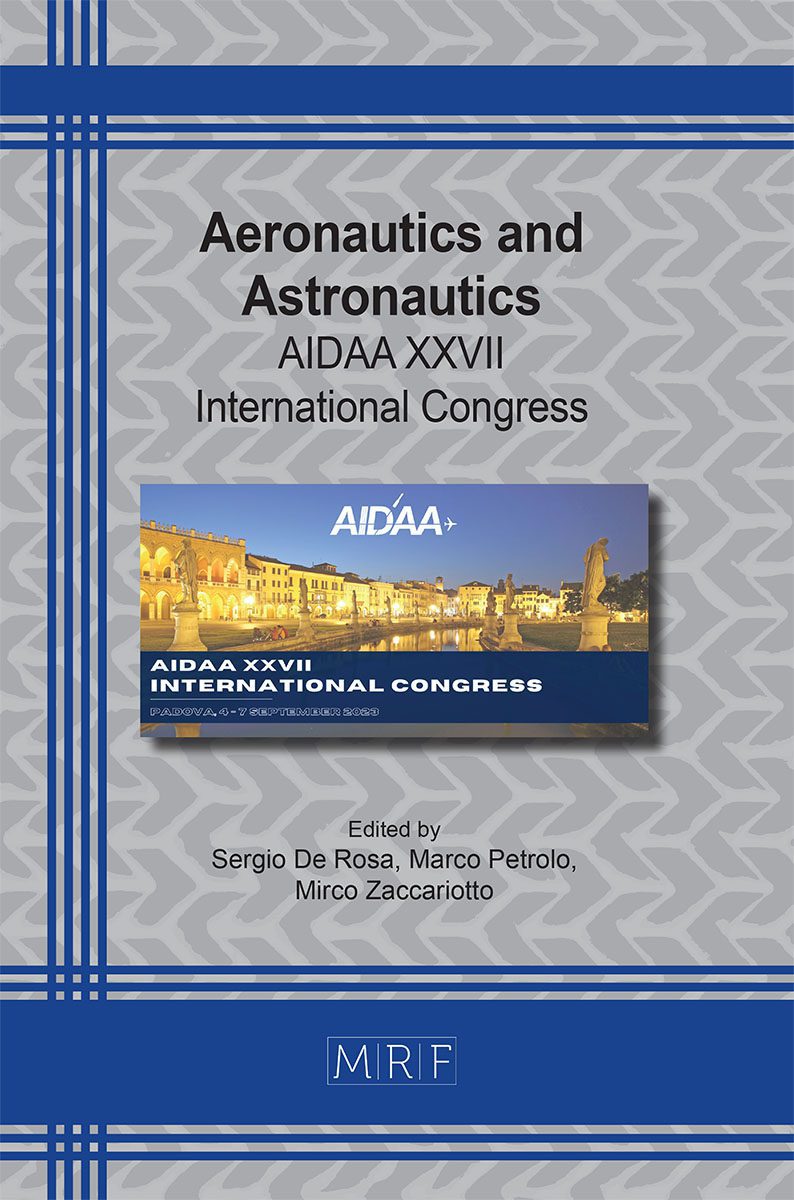Data-driven deep neural network for structural damage detection in composite solar arrays on flexible spacecraft
Federica Angeletti, Paolo Gasbarri, Marco Sabatini
download PDFAbstract. A data-driven approach based on Deep Neural Network (DNN) techniques is here proposed for Structural Health Monitoring of large in-orbit flexible systems. Damage scenarios are generated via a Finite Element commercial code to train and test the machine learning model, by considering equivalent properties of the composite material of the solar panels. The fully coupled 3D equations for the flexible spacecraft are integrated to test typical profiles of attitude manoeuvres in case of different damages. The DNN model is trained using sensor-measured time series responses, with each response associated with the label of the corresponding damage scenario, and tested via k-folding approach. This methodology offers a promising approach to detect structural damage in solar arrays on spacecraft using machine learning techniques.
Keywords
Structural Health Monitoring, Deep Learning, Flexible Spacecraft
Published online 11/1/2023, 5 pages
Copyright © 2023 by the author(s)
Published under license by Materials Research Forum LLC., Millersville PA, USA
Citation: Federica Angeletti, Paolo Gasbarri, Marco Sabatini, Data-driven deep neural network for structural damage detection in composite solar arrays on flexible spacecraft, Materials Research Proceedings, Vol. 37, pp 368-372, 2023
DOI: https://doi.org/10.21741/9781644902813-81
The article was published as article 81 of the book Aeronautics and Astronautics
![]() Content from this work may be used under the terms of the Creative Commons Attribution 3.0 license. Any further distribution of this work must maintain attribution to the author(s) and the title of the work, journal citation and DOI.
Content from this work may be used under the terms of the Creative Commons Attribution 3.0 license. Any further distribution of this work must maintain attribution to the author(s) and the title of the work, journal citation and DOI.
References
[1] E. Figueiredo, et al., Machine learning algorithm for damage detection, computational and experimental methods in structure, Vibration-Based Techniques for Damage Detection and Localization in Engineering Structures, 10 (2018) 1-39. https://doi.org/10.1142/9781786344977_0001
[2] J. Vitola, et al., Data-Driven Methodologies for Structural Damage Detection Based on Machine Learning Applications, Pattern Recognition – Analysis and Applications, (2016). https://doi.org/10.5772/65867
[3] G. B. Palmerini, F. Angeletti, P. Iannelli, Multiple Model Filtering for Failure Identification in Large Space Structures, Lecture Notes in Civil Engineering, 128 (2021) 171-181. https://doi.org/10.1007/978-3-030-64908-1_16
[4] P. Iannelli, F. Angeletti, P. Gasbarri, M. Panella, A. Rosato, Deep learning-based Structural Health Monitoring for damage detection on a large space antenna, Acta Astronautica, 193 (2022) 635-643, https://doi.org/10.1016/j.actaastro.2021.08.003
[5] F. Angeletti, P. Iannelli, P. Gasbarri, M. Panella, A. Rosato, A Study on Structural Health Monitoring of a Large Space Antenna via Distributed Sensors and Deep Learning, Sensors, 23(1) (2023) 368, https://doi.org/10.3390/s23010368
[6] F. Succetti, A. Rosato, R. Araneo, M. Panella, Deep neural networks for multivariate prediction of photovoltaic power time series, IEEE Access, 8 (2020) 211490-211505. https://doi.org/10.1109/ACCESS.2020.3039733
[7] Z. Ma, M. Yao, T. Hong and B. Li, Aircraft Surface Trajectory Prediction Method Based on LSTM with Attenuated Memory Window, Journal of Physics: Conference Series, 1215 (2019). https://doi.org/10.1088/1742-6596/1215/1/012003
[8] F. Karim, S. Majumdar, H. Darabi, S. Harford, Multivariate LSTM-FCNs for Time Series Classification, Neural network, 116 (2019) 237-245. https://doi.org/10.1016/j.neunet.2019.04.014
[9] J. K. Paik, A. K. Thayamballi and G. S. Kim, The Strength Characteristics of Aluminum Honeycomb Sandwich Panels, Thin-Walled Struct., 35 (1999) 205–31. https://doi.org/10.1016/S0263-8231(99)00026-9
[10] X. Kunbo, Z. Jiandong, G. Zizheng, C. Yan, Z. Pinliang et al., Investigation on solar array damage characteristic under millimetre size orbital debris hypervelocity impact, Proc. 7th European Conference on Space Debris, Darmstadt, Germany, 18–21 April 2017, published by the ESA Space Debris Office.
[11] F. Angeletti, P. Iannelli, P. Gasbarri, M. Sabatini, End-to-end design of a robust attitude control and vibration suppression system for large space smart structures, Acta Astronautica, 187 (2021) 416–428. https://doi.org/10.1016/j.actaastro.2021.04.007
[12] F. Angeletti, P. Iannelli, P. Gasbarri, Automated nested co-design framework for structural/control dynamics in flexible space systems, Acta Astronautica, 198 (2022) 445–453. https://doi.org/10.1016/j.actaastro.2022.05.016































